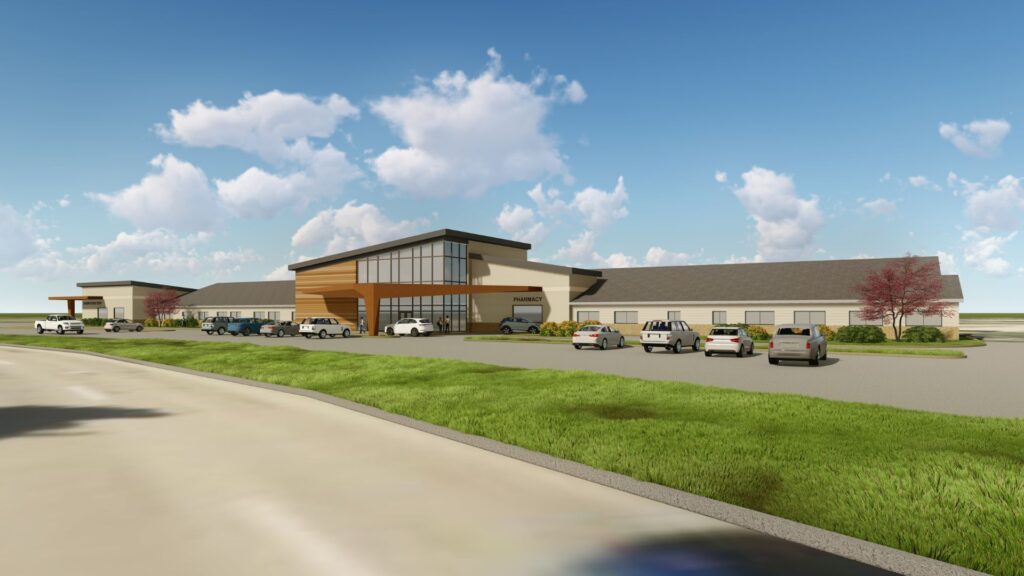Healthcare renovations demand a delicate balance of communication, budget alignment, space optimization, and time management. | Photo Credit: Halkin Mason Photography LLC
By Vince Mattina
Walk through any healthcare space, and there’s a story being told. Most focus on care — the broken arm mended, the strep throat treated, the baby delivered, the life saved and the life lost. Yet behind the emotion and patient experiences, another critical narrative exists: the operational story of how the space supports care delivery.
Healthcare renovations or projects come with inherent tensions — balancing patient care, efficiency and financial constraints. While facilities must modernize to support evolving models of care, these efforts are often constrained by budget limitations and the need to maintain uninterrupted operations. These challenges are amplified in renovation projects, where existing conditions and operational needs add complexity.
The key to a successful renovation isn’t just experience and technical expertise — it’s about fostering open communication and aligning all stakeholders under a shared vision.
Finding Communication Synergies
Successful renovations start with a common language. Architects, healthcare teams, and administrators often have different perspectives and terminology. Finding communication synergies ensures alignment on project goals, translating design concepts into functional, patient-centered spaces.
For instance, while designing an operating room project, a team encountered confusion over staff using different terms for the same element — “floor box,” “utility pedestal” and “doghouse.” After multiple discussions, they asked a simple yet revealing question: “What’s the difference between these?” The answer? There was none. The realization underscored the importance of clear communication in design. Assumptions — especially incorrect ones — can lead to misalignment, while asking the right questions fosters shared understanding and informed decision-making.
Effective communication goes beyond terminology — it’s about listening to the stories of staff and patients, understanding workflow challenges and integrating lessons learned from past projects. The best design solutions emerge when all parties feel heard and invested in the process.
Design teams that prioritize the diverse needs, experiences, and well-being of all occupants — patients, staff and visitors — can create more empathetic, inclusive environments. Through research and direct engagement, these teams gather insight into how individuals interact with a space, particularly in sensitive environments like cancer centers. Prototyping and iterative testing further refine ideas into functional, meaningful, and accessible spaces that support comfort and usability.
Innovative tools are also enhancing communication between stakeholders. In a recent cardiovascular center operating room renovation, augmented reality (AR) was used to convey detailed 3D spatial relationships and complex 360-degree circulation paths. Delivered via a smartphone or tablet, AR technology enabled stakeholders and contractors to visualize proposed layouts of equipment and utilities in real time. This approach demystified technical aspects and fostered alignment by making abstract design concepts more tangible for all involved.
When communication is intentional, empathetic, and supported by both research and technology, it leads to smarter decisions — and ultimately, to healthcare environments that serve everyone more effectively.
Aligning Budget with Design Priorities

Budget constraints are a reality of every healthcare project. However, cost reductions don’t have to mean sacrificing quality. By fostering trust and collaboration early, teams can optimize project scope while maintaining design integrity.
For example, in a hospital renovation involving both adult and psychiatric emergency care, spatial constraints threatened to impact patient safety and workflow. The team maintained functionality by strategically reallocating space between departments while meeting nursing union requirements — without increasing costs.
Establishing clear evaluation criteria early in the process can significantly support long-term decision-making. All projects at Fishbeck start with setting measurable values and baselines helped ensure decisions were grounded in solid data, sound business judgment, and alignment with the institution’s future vision. With countless decisions to be made throughout the design and construction process, a structured framework proved essential.
For large or complex decisions, teams developed evaluation matrices that displayed various options along one axis and key performance criteria along the other. Construction managers contributed order-of-magnitude cost estimates for each option, and the resulting visual tables allowed project stakeholders to compare alternatives side by side. This approach facilitated productive conversations with end users and helped build consensus on the most effective path forward.
Conducting thorough cost-benefit analyses can also identify savings opportunities. Repurposing existing structures, integrating modular design solutions, and leveraging flexible layouts can help facilities adapt to future needs without incurring additional expenses. When stakeholders communicate openly about financial priorities, projects can achieve both fiscal responsibility and high-quality care environments.
Impact Planning: Minimizing Disruptions to Care
Renovation projects must maintain operations while improving facilities. Proactively forecasting areas around the work zone that may be affected — through detailed impact planning — supports smoother navigation of challenges such as patient flow adjustments, equipment access and phased construction sequencing.
Clear communication keeps projects on track and prevents unexpected expenses. Well-coordinated work sequences minimize downtime in critical areas, ensuring uninterrupted patient care. Proactively identifying risks allows teams to mitigate costly delays and safety hazards.
Throughout many health systems, renovation work is taking place within an active emergency department that must remain fully operational throughout construction. To manage this complexity, the design team collaborated closely with the construction manager and the owner’s representative to develop a highly detailed phasing plan. The strategy breaks the project into six sequential phases spanning two separate buildings. Each phase is completed and occupied before the next begins, enabling continuous functionality of emergency services with minimal disruption.
By working closely with hospital leadership, clinical staff, and facility managers, design teams can develop strategies that align planning and sequences which inform construction schedules to support patient needs—creating smooth transitions between old and new spaces without compromising care quality.
See Part II of this article, featuring tips on optimizing space and managing time constraints, later this week.
Vince Mattina, AIA, NCARB, CDT, is Associate and Healthcare Team Leader with Fishbeck and can be reached at vmattina@fishbeck.com.


